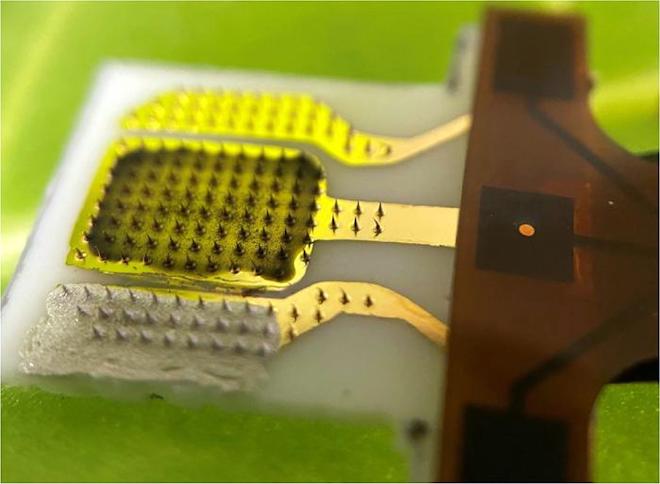

Pests, drought, extreme temperatures and infections all cause stress in plants. In response, plants’ normal biochemistry gets out of whack, and they produce hydrogen peroxide, which also acts as a signal between cells to activate their defense mechanisms. Early detection of this chemical clue could help people expertly tailor plant care and prevent further damage, thereby maximizing crop yields, even in difficult conditions. But most current methods for detecting hydrogen peroxide require removal of plant parts and multiple processing steps or external detectors that observe fluorescence changes, which can get muddled by chlorophyll. And researchers have previously investigated plant-wearable devices to monitor leaf water content as an indicator of plant health. So, Liang Dong and colleagues set out to design a stand-alone patch that quickly and accurately detects the hydrogen peroxide distress signals from living plants.
To build a patch that sticks to the underside of leaves, the researchers created an array of microscopic plastic needles across a flexible base. Onto this patterned surface they coated a chitosan-based hydrogel mixture that converted small changes in hydrogen peroxide into measurable differences in electrical current. The mixture contained an enzyme that reacted with hydrogen peroxide to produce electrons and reduced graphene oxide to conduct those electrons through the sensor.
The researchers tested their patches on live, healthy soybean and tobacco plants and compared them to stressed bacteria-infected plants. They found:
-
For both crops infected with the bacterial pathogen Pseudomonas syringae pv. tomato DC3000, the sensor produced more electrical current on stressed leaves than on healthy ones, and the current levels were directly related to the amount of hydrogen peroxide present.
-
The sensor’s measurement of hydrogen peroxide was accurate and confirmed by conventional lab analyses.
-
After about 1 minute, the patches measured hydrogen peroxide in the leaves at significantly lower levels than those previously reported from needle-like sensors for live plants.
-
Patches could be reused nine times before the microscopic needles lost their form.
The new strategy provides information that could help growers efficiently make decisions about their crops. “We can achieve direct measurements in under a minute for less than a dollar per test,” says Dong. “This breakthrough will significantly streamline analysis, making it practical for farmers to use our patch sensor for real-time disease crop monitoring.”

And the researchers are excited to continue moving the research forward. “Our next step is to refine the technology and enhance its reusability,” concludes Dong.
Funding: The authors acknowledge funding from Iowa State University, the U.S. Department of Agriculture’s National Institute of Food and Agriculture, and the National Science Foundation.
- The paper A Biohydrogel-Enabled Microneedle Sensor for In Situ Monitoring of Reactive Oxygen Species in Plants was published in ACS Sensors. Authors: Nawab Singh, Qinming Zhang, Weihui Xu, Steven A. Whitham & Liang Dong.

